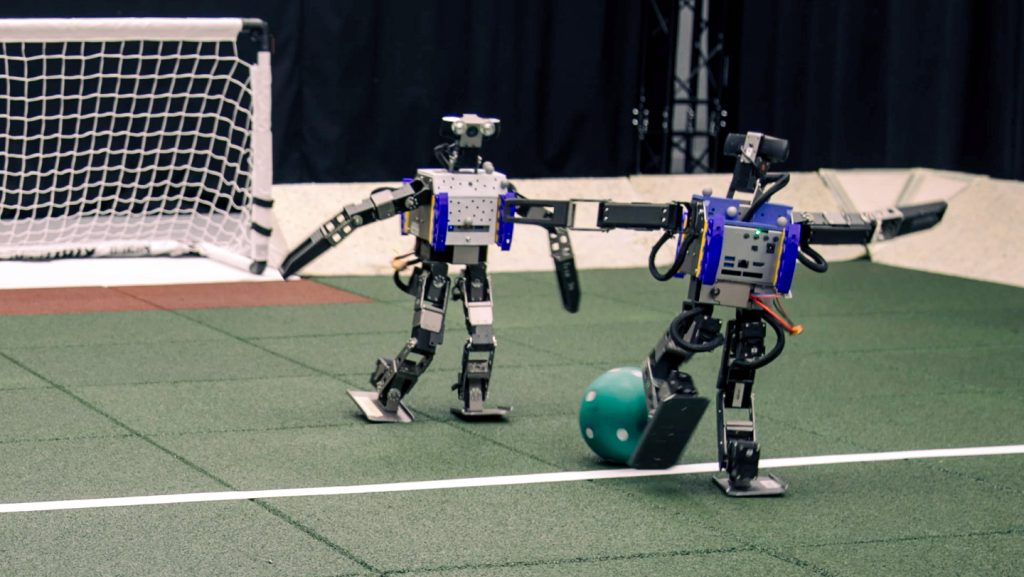Advancements in AI are not only transforming our digital lives but also about to revolutionize our physical interactions with humanoid robots trained using reinforcement learning, a type of AI. These robots have the potential to assist in various real-world settings such as factories, nursing homes, and space stations. The possibilities presented by reinforcement learning in the physical world are seen to be even more transformative than those in the digital world, according to experts in the field.
Recent research in Science Robotics has focused on developing software for robots trained in reinforcement learning to perform tasks such as walking and playing soccer. The use of reinforcement learning allows the robots to adapt to unfamiliar situations and learn through trial and error. By utilizing data such as robot joint positions and movements, as well as external environmental inputs, the AI-controlled robots can make more responsive and adaptive movements. Training in virtual environments before deploying in the real world helps ensure the success of these robots in challenging tasks.
One of the studies conducted involved developing software for a toy robot, OP3, to play soccer. The game of soccer presents a complex environment that requires planning, agility, exploration, and competition. The researchers aimed to test the robustness of reinforcement learning in teaching the robot complex motor skills and strategic decision-making. The results showed that the AI-controlled robots learned to walk faster, turn quickly, and perform advanced skills through reinforcement learning compared to traditionally programmed robots.
Another study focused on training a larger humanoid robot, Digit from Agility Robotics, using a transformer model that processed data input to make decisions on movements. This robot, standing at five feet tall, successfully performed tasks ranging from walking on different terrains to handling external forces such as being bumped off balance by an exercise ball. The controller developed using reinforcement learning enabled the robot to execute complex physical challenges successfully.
The application of reinforcement learning to humanoid robots showcasing bipedal locomotion marks a significant advancement in the field of robotics. The studies highlight the potential for unlocking new capabilities in AI-powered robots, leading to more agile, adaptable, and robust systems. These developments are seen as a tipping point, pushing the boundaries of what is possible with manually defined controllers. In the future, the combination of different approaches presented in these studies is expected to lead to even more sophisticated AI robots capable of performing a wide range of tasks with precision and efficiency.


